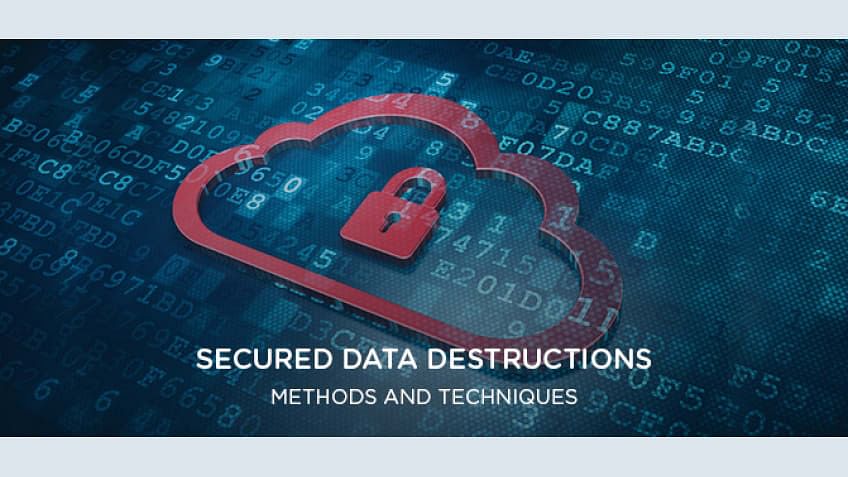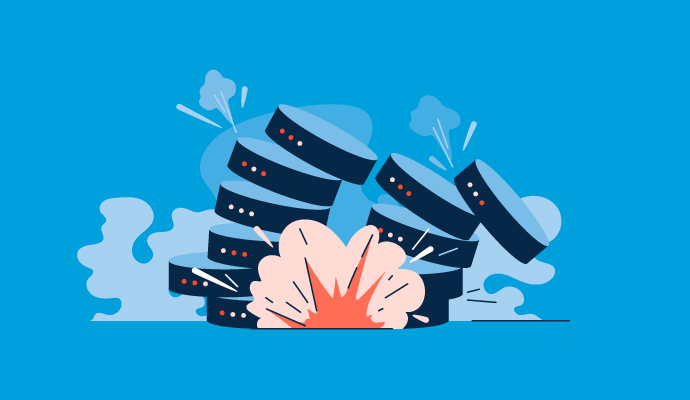Finest Practices for Data Destruction to Strengthen Your Cyber Security Framework
Finest Practices for Data Destruction to Strengthen Your Cyber Security Framework
Blog Article
The Value of Effective Data Damage Practices in Safeguarding Sensitive Info and Ensuring Computer Protection
In a period where data violations are increasingly typical, the relevance of reliable information destruction practices can not be overemphasized. Carrying out durable information destruction techniques not just alleviates these dangers yet additionally lines up with lawful conformity demands, making certain that organizations support their track record and foster client count on.
Comprehending Information Devastation
Recognizing data destruction is critical in today's digital landscape, where sensitive details can easily be compromised. Reliable data damage entails not simply deleting files yet making certain that data is irretrievable via detailed methods. This procedure is necessary for organizations that take care of personal customer information, copyright, or inner files, as any violation can cause severe financial and reputational effects.
Data destruction encompasses various strategies, consisting of shredding physical media, degaussing magnetic storage gadgets, and utilizing software-based solutions that overwrite data numerous times. Each technique serves a specific objective and should straighten with the sensitivity of the details being disposed of. Physical devastation is often favored for difficult drives containing very personal data, while software approaches might be adequate for less sensitive details.
In addition, adhering to market criteria and laws, such as the General Data Security Guideline (GDPR) or the Health Insurance Coverage Mobility and Accountability Act (HIPAA), is crucial for conformity and to mitigate legal risks. Organizations has to establish a robust data damage policy, train staff members on best techniques, and frequently investigate their procedures to ensure that all delicate info is taken care of firmly and effectively.
Threats of Inadequate Practices
Inadequate information devastation techniques subject companies to substantial dangers that can have far-ranging consequences. When delicate info is not properly thrown away, it remains vulnerable to unauthorized access, which can lead to information breaches and identification burglary. Such cases not only jeopardize the safety and security of individuals yet also tarnish the company's track record, causing a loss of consumer trust and prospective monetary consequences.
Moreover, regulatory compliance is progressively strict in several sectors. Failing to comply with data destruction regulations can result in substantial penalties and legal actions versus organizations. These fines can divert and stress financial sources interest from core organization operations.
Additionally, the misuse of recurring information can cause intellectual residential property theft or corporate espionage, jeopardizing affordable benefits (data destruction). The impact of inadequate information devastation expands beyond immediate financial losses; it can likewise lead to long-term damage to brand stability and market position

Organizations need to recognize that information security is not only regarding preventing violations; it also encompasses the liable management of data throughout its lifecycle. Neglecting efficient data devastation methods can have tragic implications, emphasizing the requirement for durable measures to reduce these threats.
Ideal Practices for Information Damage
Executing reliable information destruction techniques is crucial for protecting sensitive details and keeping compliance with regulative standards. Organizations should embrace a multi-faceted strategy to ensure that information is irretrievable, thereby preventing unapproved gain access to and possible breaches.
First, information must be categorized based upon sensitivity, allowing organizations to use proper devastation approaches tailored to the degree of threat. For digital data, utilizing software-based data-wiping devices that abide by sector requirements can successfully overwrite existing information. Physical damage approaches, such as shredding or degaussing, are vital for tools that store delicate details, making sure full removal.
Developing a clear information retention plan is vital, describing the length of time various sorts of info ought to be preserved before damage. Normal audits of information storage space systems are likewise necessary to identify unnecessary or out-of-date information requiring elimination.
In addition, training employees on the relevance of information damage and the certain methods to comply with fosters a society of protection within the company. Keeping paperwork of information damage refines offers liability and sustains conformity with inner plans and external regulations. By sticking to these finest methods, organizations can significantly alleviate the dangers related to information exposure.
Legal and Compliance Considerations

Failing to adhere to these regulations can lead to severe charges, including substantial fines and reputational damages. Organizations must execute a robust data devastation plan that straightens with these lawful go to my site structures and provides clear guidelines on the correct techniques of information disposal, whether physical shredding or digital cleaning.
Additionally, preserving paperwork of data damage activities is important for showing compliance throughout audits or inspections. By prioritizing lawful and compliance considerations, organizations can boost their information protection pose and foster count on with clients and stakeholders, eventually adding to an extra secure information monitoring environment.
Benefits of Effective Data Devastation
Efficient data destruction practices prolong past mere compliance; they supply significant advantages to organizations that prioritize them. By ensuring that sensitive information is irretrievably ruined, organizations mitigate the threat of data breaches and the possible economic repercussions related to them. This proactive method not just safeguards against unapproved access yet also enhances the overall reliability of the company in the eyes of clients and stakeholders.
Implementing durable information destruction approaches, such as physical devastation of storage devices or sophisticated data cleaning strategies, adds to the fortifying of an organization's cybersecurity posture. data destruction. It decreases the chance of intellectual residential property theft and secures exclusive info, therefore preserving an one-upmanship on the market

Verdict
In final thought, efficient data devastation methods are important for safeguarding delicate info and improving total computer system security. By applying comprehensive approaches such as shredding, degaussing, and software program overwriting, organizations can minimize the risks connected with unapproved accessibility and information violations. Adherence to governing criteria, consisting of GDPR and HIPAA, more strengthens compliance and safeguards against legal effects. Ultimately, a dedication to durable data damage approaches promotes a culture of duty, therefore reinforcing a company's cybersecurity stance and preserving customer trust fund.

Report this page